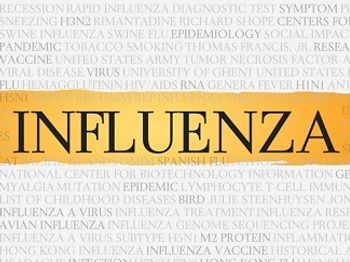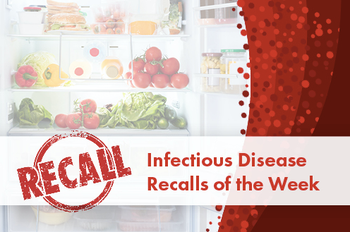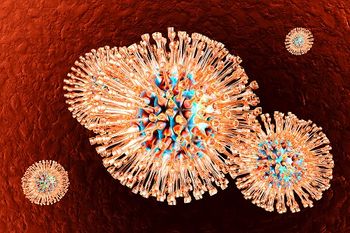
A research team led by Yale University scientists report that breathing dry air lowers defenses against influenza virus infection.

A research team led by Yale University scientists report that breathing dry air lowers defenses against influenza virus infection.

A new study investigates the association of S aureus colonization with specific Immunoglobulin E production with common food allergens and allergies in early childhood independent of eczema severity.

In addition to cUTI and cIAI, ceftolozane/tazobactam (Zerbaxa) is now approved to treat hospital-acquired/ventilator-associated bacterial pneumonia.

Following the launch of the campaign in March 2015, investigators saw a 77% increase in HIV testing compared with January and February of the same year in Beijing.

A study led by Cleveland Clinic investigators confirms that placing implantable cardiac devices inside an envelope that emits antibiotics slashes infection rates.

A new study points to gaps in registered nurses’ knowledge about stewardship efforts but highlights a clear desire to engage in programs that help reduce resistance.

Here is a look at infectious disease-related US Food and Drug Administration news from the week of May 26, 2019.

We’ve rounded up a list of important US Food and Drug Administration (FDA) and US Department of Agriculture (USDA) recalls from this past week.

Stay up-to-date on the latest infectious disease news by checking out our top 5 articles of the week.

The experimental drug protected 4 African green monkeys following a lethal dose of Nipah virus in a study conducted by NIAID, CDC, and Gilead investigators.

Few studies have examined the impact of CRE in low-income and middle-income countries, but now new literature provides much-needed data on antibiotic resistance in these settings.

Thus far 971 cases of measles have been documented in the United States in 2019.

Initiating a model that provides testing, treatment and linkage to care for HCV in correctional facilities would improve outcomes but requires a costly investment.

As May draws to a close, the Contagion® editorial staff is recapping the trends and top infectious disease news of the month.

In the first-in-human trial of the replication-defective HSV529, the vaccine was well-tolerated and elicited antibody and T-cell responses in HSV seronegative adults.

Although antibiotic prophylaxis for new mothers is common following caesarean section births, a new study provides evidence of benefits on infection reduction in women following operative vaginal birth.

As part of the Wellcome Trust’s “Contagious Cities” program, artist Mariam Ghani’s work reviews the terminology and metaphors used to describe outbreaks and epidemics.

Investigators with the Rhode Island Department of Health discovered the outbreak strain in a bag of unopened flour sold by ALDI stores.

According to the New Jersey Department of Health, there have been 22 confirmed cases of Legionnaires’ disease in individuals who reside in or visited Union County.

The American Society of Transplantation Infectious Diseases Community of Practice has issued a new section of guidelines as part of its series of evidence-based graded recommendations for the diagnosis, prevention, and management of SSIs.

Long-term care facilities could reduce hospitalizations for pneumonia and influenza by hiring more registered nurses and licensed independent practitioners, increasing staffing hours, and employing higher quality care practices.

Investigators hope to pinpoint the underlying factors of immune responses against influenza in children to help with the development of more effective influenza vaccines.

Generic PrEP drugs offer a cost-effective way for people to reduce their risk of HIV, though some worry about the authenticity of drugs purchased online.

The likelihood of using PrEP is significantly influenced by recommendations from health care providers and concerns about side effects, according to a recent study of heterosexual individuals in Philadelphia.

The LATITUDE study will assess whether long-acting injectable cabotegravir/rilpivirine is superior to oral ART in managing HIV infections among this population.

Here is a look at infectious disease-related US Food and Drug Administration news from the week of May 19, 2019.

We’ve rounded up a list of important US Food and Drug Administration (FDA) and US Department of Agriculture (USDA) recalls from this past week.

Stay up-to-date on the latest infectious disease news by checking out our top 5 articles of the week.

Is there a cure? How long until we find it? And will it work for the majority of people living with HIV?

A deep dive into an outbreak of tularemia linked to contaminated must and wine that led to several complicated infections, requiring extended durations of treatment.